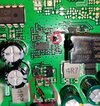There were a number of problems with the amateur 11-meter band. First of all, it was not harmonically related to the other HF bands and, as such, crystals and VFOs that covered the 160-meter, 80/75-meter, 40-meter, 20-meter, 15-meter, and 10-meter bands could not be used on the 11-meter.
Next, amateur radio operation wasn't even secondary but was terciary to other services including industrial ("plasma" uses) and medical (diathermy) which put out considerable, broad band, interference. In urban and suburban areas the 11-meter band was almost useless, because of this wideband interference, a majority of the time.
Then, and this is of great importance, the 11-meter band was actually allocated to land-mobile operation by the ITU. As such, when the Class "D" Citizen's Radio Service was proposed, in 1957, that service actually was in compliance with the ITU allocations. That is, "CB" qualifies as a land-mobile service whereas amateur radio does not qualify.
When the Novice Class license was first in place, the HF operations were CW only on the 80-meter band and CW only on the 11-meter band. However, since the 11-meter band was basically a wasteland, the FCC soon changed the Novice HF segments to portions of the 80-meter, 40-meter, and 15-meter bands.
There actually was very little amateur radio usage of the 11-meter band. When the FCC first proposed the Class "D" service, the ARRL protested greatly and even tried to have a series of contests on the 11-meter band to increase the usage of this band. However, those efforts failed miserably!
Glen, K9STH


